American Pit Bull Terrier vs Staffordshire Bull Terrier: Breed comparison
A vet reveals everything you need to know to pick the right dog for your lifestyle
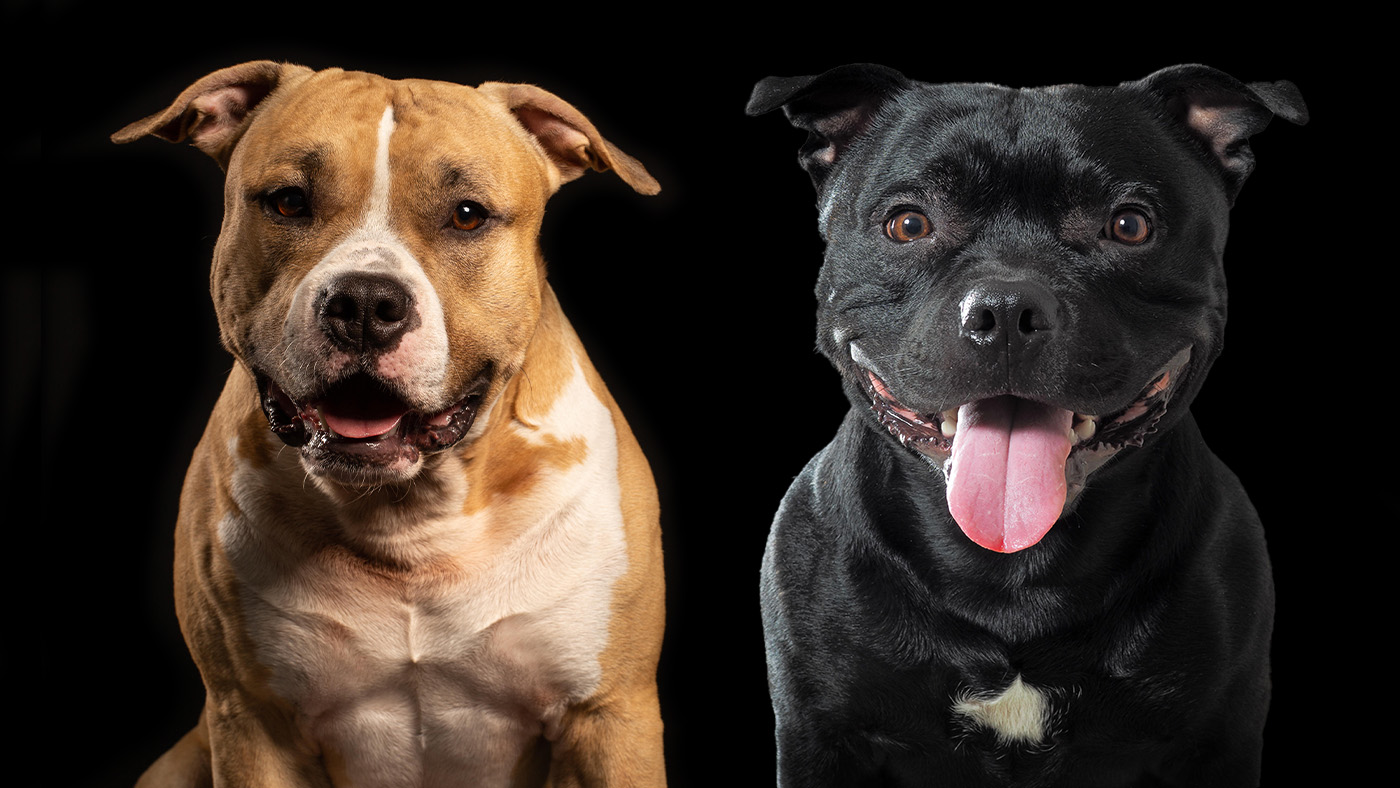
When comparing the American Pit Bull Terrier vs Staffordshire Bull Terrier, you’d be forgiven for thinking they’re the same breed. At first glance, they look incredibly similar – but as a vet with nearly 14 years of experience working with both breeds, I can confidently say there are important differences in their size, temperament, and care requirements.
I’ve worked with lots of bully breeds in clinics and surgical theatres during my time in general practice. I know first-hand how much confusion there is around these two breeds – especially given their controversial reputations – and that’s why it’s important to dig deeper into what sets them apart.
If you’re trying to decide which breed is the right fit for you and your family, or you simply want to learn more, this guide covers everything from appearance and personality to exercise needs and health. You can also check out our full breed profiles for American Pit Bull Terriers and Staffordshire Bull Terriers for more in-depth info.
Size: American Pit Bull Terrier vs Staffordshire Bull Terrier
The American Pit Bull Terrier is generally taller and leaner than the Staffordshire Bull Terrier. Adult American Pit Bull Terriers typically stand around 17–21 inches (43–53 cm) tall and weigh between 30–65 pounds (13.5–29.5 kg), depending on sex and build.
In contrast, the Staffordshire Bull Terrier, often affectionately called a "Staffy," is more compact and muscular. They usually measure 14–16 inches (36–41 cm) at the shoulder and weigh around 24–38 pounds (11–17 kg).
So, if you're looking for a slightly larger, more athletic dog, the Pit Bull might be more suitable. If you prefer a sturdy, stockier companion with a slightly smaller footprint, the Staffy is a great choice.
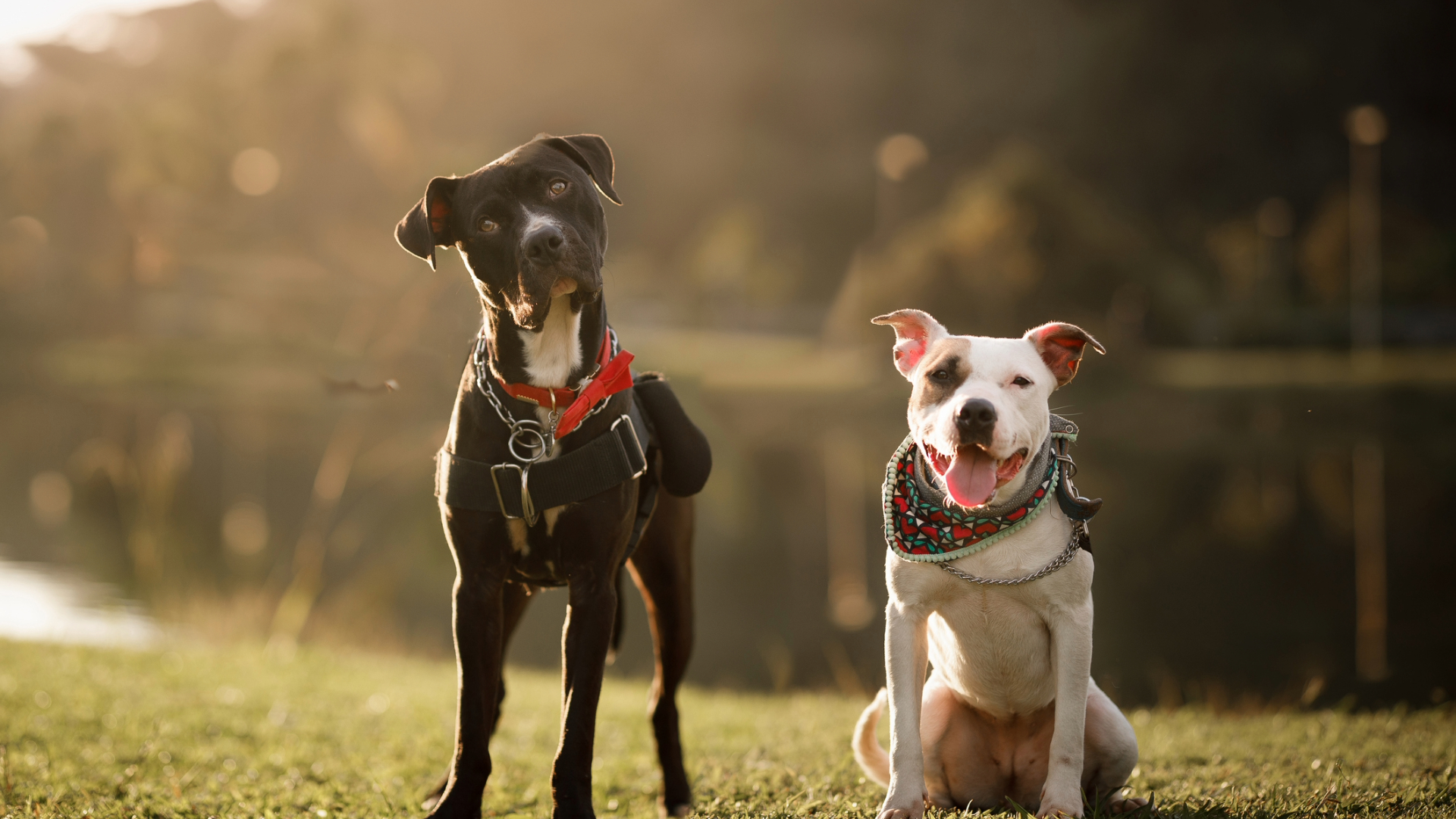
Appearance: American Pit Bull Terrier vs Staffordshire Bull Terrier
Both breeds share that characteristic strong, muscular build with broad chests and short, sleek coats. However, American Pit Bulls tend to have a longer muzzle and a more athletic frame. Their ears are often cropped in the US (though this practice is banned in the UK), and they have a noticeable tuck-up in the abdomen.
Get the best advice, tips and top tech for your beloved Pets
Staffordshire Bull Terriers, on the other hand, are blockier and more compact. They have a shorter, broader face, a famously wide “smile,” and well-defined cheek muscles. Their ears are typically rose-shaped and left natural.
In terms of coat colors, both breeds come in a wide variety – from brindle, black, and blue, to fawn, red, and white. Patterns can include solid, patched, or piebald. Their short, single coats mean they don’t have the insulation of double-coated breeds, so they may feel the cold more in winter.
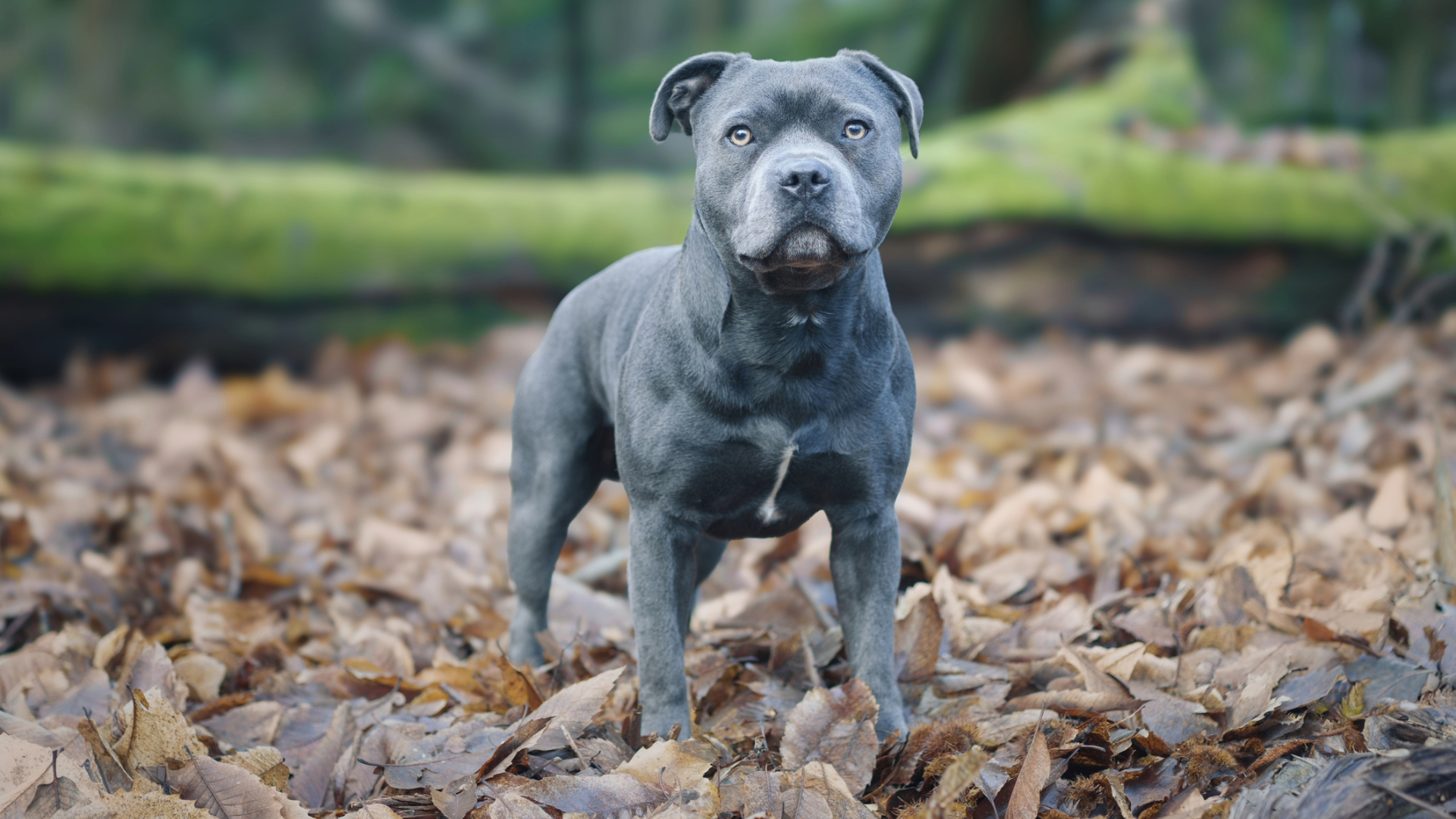
Intelligence and Trainability: American Pit Bull Terrier vs Staffordshire Bull Terrier
Both breeds are intelligent, eager to please, and highly trainable – but they also require consistent handling and early socialization. Pit Bulls, in particular, thrive on positive reinforcement and mental stimulation. Without it, they can become bored and may develop unwanted behaviors.
Staffies are known for their clownish personality and affectionate nature. They’re typically very responsive to training, especially when rewards (and cuddles!) are involved. Their people-focused attitude makes them natural companions, and they often excel in canine sports and obedience classes.
Top training tips include:
- Start early with socialization and reward-based training.
- Use short, upbeat sessions to keep their attention.
- Avoid harsh corrections – both breeds are sensitive and can become anxious or frustrated with punishment.
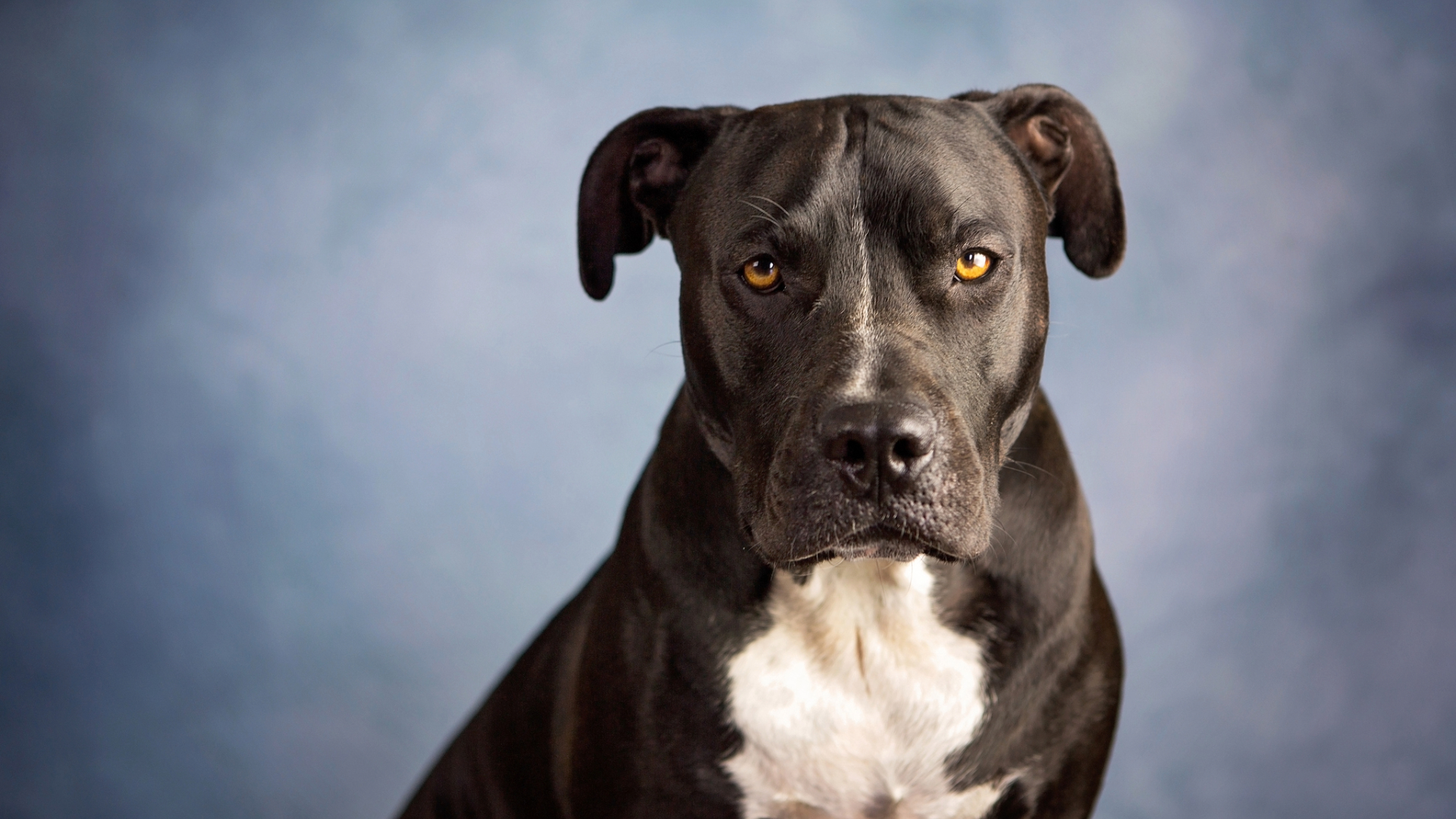
Exercise Needs: American Pit Bull Terrier vs Staffordshire Bull Terrier
Both the American Pit Bull Terrier and the Staffordshire Bull Terrier are energetic dogs that need plenty of physical and mental stimulation. Daily walks, structured playtime, and off-lead exercise in a secure area are essential.
Pit Bulls typically have higher stamina levels and might enjoy longer runs or agility activities. Staffies, while still active, are often happy with shorter but more frequent bursts of exercise.
A bored bully breed is a destructive one, so interactive toys, scent games, and obedience work can be a huge help in keeping them mentally satisfied.

Grooming: American Pit Bull Terrier vs Staffordshire Bull Terrier
Grooming is one area where both breeds are refreshingly low-maintenance. Their short coats shed moderately year-round but don’t require trimming or special care.
Weekly brushing with a rubber grooming mitt or a bristle brush will help remove loose hairs and distribute skin oils. This keeps their coat sleek and healthy.
You can check out the best dog brushes if you’re not sure where to start. Don't forget to check and clean their ears, trim their nails regularly, and brush their teeth a few times a week to support good dental hygiene.

Health Considerations: American Pit Bull Terrier vs Staffordshire Bull Terrier
Both breeds are generally robust, but like all dogs, they can be prone to certain hereditary and lifestyle-related health conditions.
American Pit Bull Terriers may be more predisposed to:
- Hip dysplasia
- Allergies (especially related to skin)
- Hypothyroidism
- Heart disease
Staffordshire Bull Terriers can be more at risk of:
- Hereditary cataracts and other eye issues
- Elbow dysplasia
- Skin allergies
- L-2-Hydroxyglutaric Aciduria (a rare but serious neurological condition)
Both breeds benefit from:
- Annual vet checkups
- Weight monitoring
- A balanced diet
- Parasite control
- Responsible breeding (health-tested parents are essential!)
- Pet insurance is also a good idea, especially since treatment for some of the above conditions can be costly
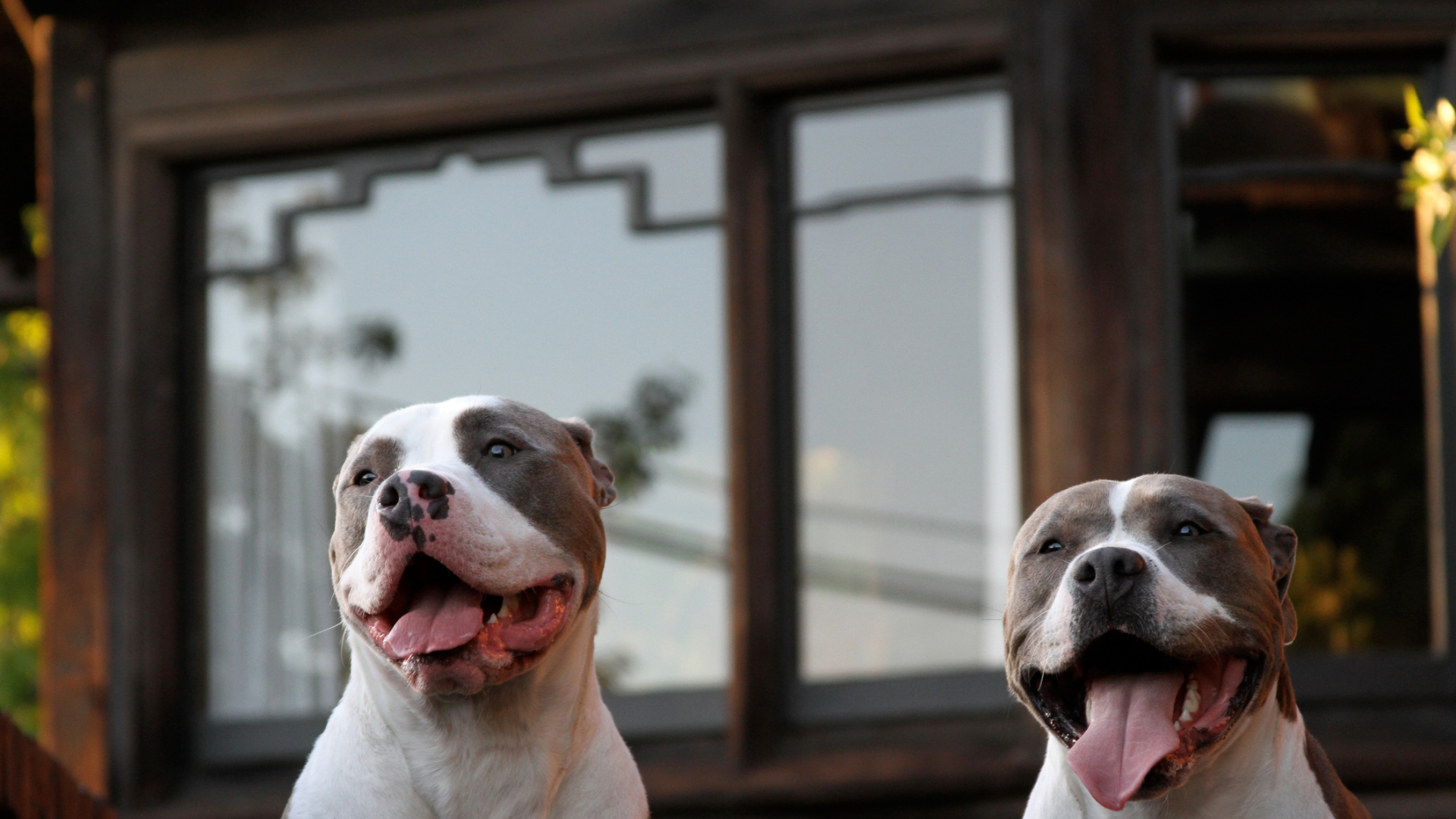
Owner suitability: American Pit Bull Terrier vs Staffordshire Bull Terrier
When it comes to choosing between the American Pit Bull Terrier vs Staffordshire Bull Terrier, your lifestyle and experience level should guide your decision.
Pit Bulls are best suited to active, experienced owners who understand the importance of firm but kind training and early socialization. They do best in homes where someone is around most of the day, and they need secure, high-fenced gardens due to their strength and agility.
Staffordshire Bull Terriers are often a better choice of dog for first-time owners, thanks to their affectionate and forgiving nature. They tend to be very family-oriented and usually do well with children if socialized from a young age.
However, both breeds need dedicated training and exercise, and they are not the right fit for anyone who can’t commit to daily walks, mental enrichment, and consistent routines.
If you're considering one of these brilliant breeds, take the time to meet both types and speak with vets, trainers, and reputable rescue centers. With the right environment, both the American Pit Bull Terrier and the Staffordshire Terrier make loving, loyal, and endlessly entertaining companions.
Read next: American Staffordshire Terrier or Dogs that get mistaken for pitbulls

Emma graduated from the Royal Vet College in London in 2011. She has a keen interest in surgery and went on to do a postgraduate certificate in small animal surgery and was then awarded advanced practitioner status in the same discipline.
Edited by Megan Milstead.
This page was last updated in June 2025 by Emma Chandley.
Emma Chandley is a vet with 14 years of experience and has a keen interest in surgery. After graduating from the Royal Vet College in London in 2011, she achieved a postgraduate certificate in small animal surgery from the British Small Animal Veterinary Association and Nottingham Trent University. She was then awarded advanced practitioner status in the same discipline by The Royal College of Veterinary Surgeons. She has a black Labrador and two pygmy goats at home.
